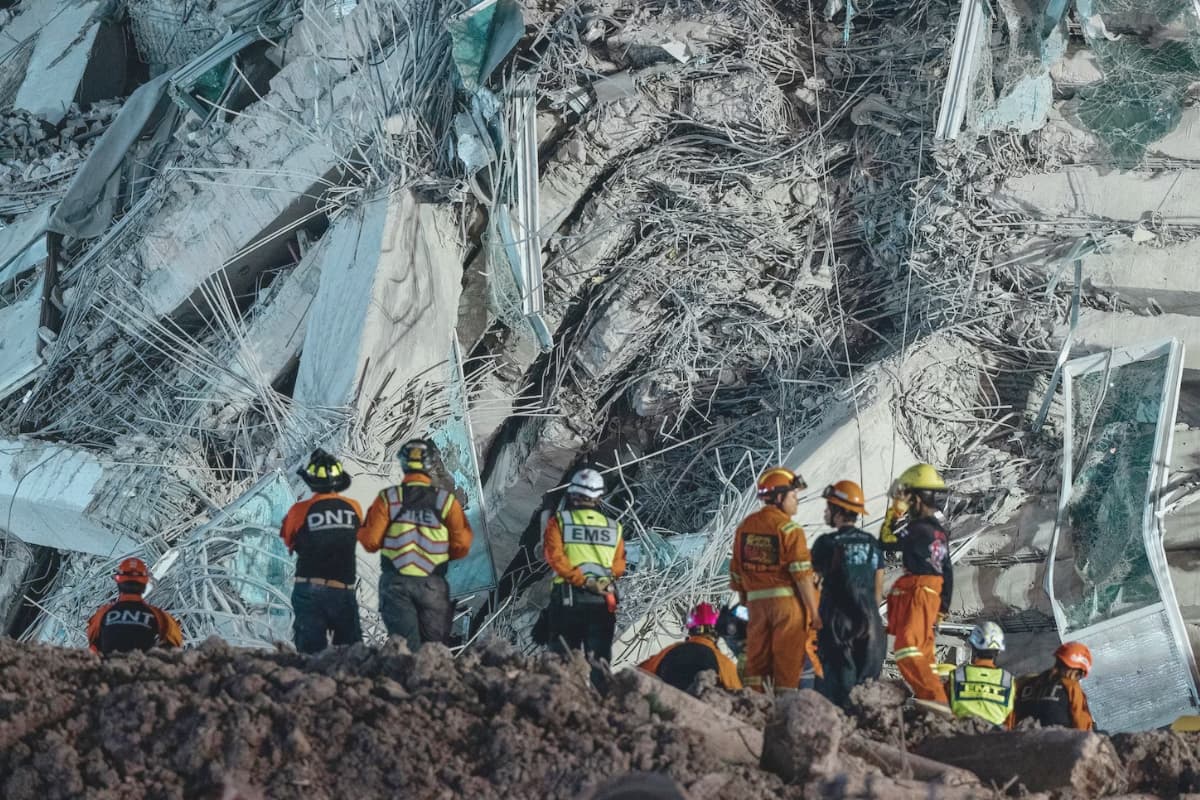
Powerful Earthquake Kills Over 700 in Myanmar and Thailand; Thousands Injured
Massive 7.7 Magnitude Quake Topples Buildings, Triggers State of Emergency in Myanmar
A devastating earthquake struck Myanmar and Thailand on Friday, leaving at least 700 dead and more than 1,670 injured. The powerful 7.7-magnitude earthquake hit Myanmar’s Mandalay region and affected neighbouring Thailand, toppling buildings, collapsing bridges, and causing large-scale destruction across both countries.
The Myanmar military government confirmed that 694 people were killed and over 1,670 injured in the Mandalay region alone — the worst affected area. In Thailand, authorities reported at least 10 fatalities in Bangkok, primarily due to the collapse of an under-construction 30-storey skyscraper where more than 80 workers were trapped under the debris.
Key Highlights:
-
State of emergency declared in six areas in Myanmar: Sagaing, Mandalay, Magway, Shan State, Naypyidaw, and Bago.
-
Over 81 people trapped in collapsed skyscraper in Bangkok.
-
Myanmar’s junta makes rare appeal for international humanitarian aid.
-
Flights operating normally in Bangkok despite tremors.
-
US, India, and EU pledge aid and technical assistance.
-
Myanmar hospital, bridges, and infrastructure suffered significant structural damage.
-
UN and Red Cross mobilising rescue efforts across Southeast Asia.
The earthquake’s epicentre was located in central Myanmar, at a shallow depth of 10 km (6.2 miles), increasing the destructive impact. Experts from the United States Geological Survey (USGS) warned that the shallow depth intensified the shockwaves, making buildings and infrastructure highly vulnerable to collapse.
Authorities in Myanmar also reported major damage to a 1,000-bed hospital in Naypyidaw, where rows of injured people were treated in outdoor emergency wards. In addition, public infrastructure, including roads, bridges, and dams, sustained extensive damage, raising concerns about possible aftershocks.
Economic & Social Impact
USGS and disaster assessment agencies estimated potential fatalities between 10,000 to 100,000 and predicted economic losses of up to 70% of Myanmar’s GDP due to the quake. Myanmar's outdated and vulnerable infrastructure worsened the devastation, as many buildings were not constructed to withstand high-magnitude earthquakes.
The quake was felt across Thailand, China’s Yunnan province, and parts of India. In Bangkok, the Thai Prime Minister declared a state of emergency, later lifted after safety inspections. However, the city was declared a disaster area following extensive damage to high-rise structures.
Global Response & Assistance
International leaders, including US President Donald Trump, Indian Prime Minister Narendra Modi, and EU Chief Ursula von der Leyen, expressed condolences and pledged assistance. The United Nations and the US Agency for International Development (USAID) began mobilising relief efforts. Thailand’s civil aviation confirmed that all flights in and out of Bangkok continued without disruption.
The Thai government arranged temporary shelters for affected tourists and residents, while the Myanmar junta appealed for blood donations and medical supplies.
For any enquiries or information, contact info@thelawreporters.com or call us on +971 52 644 3004. Follow The Law Reporters on WhatsApp Channels